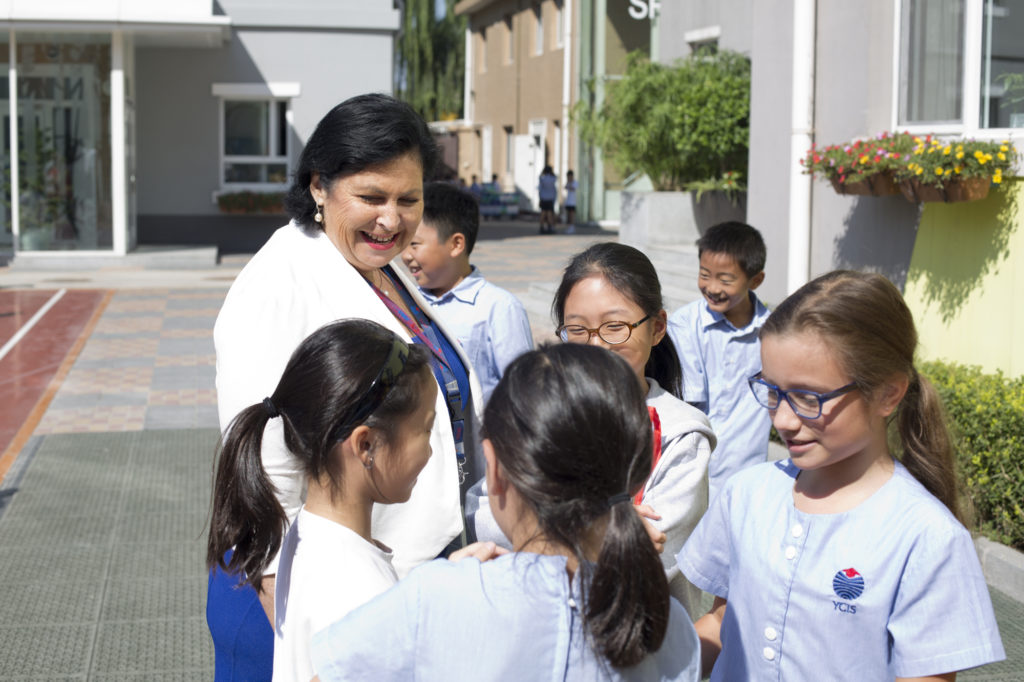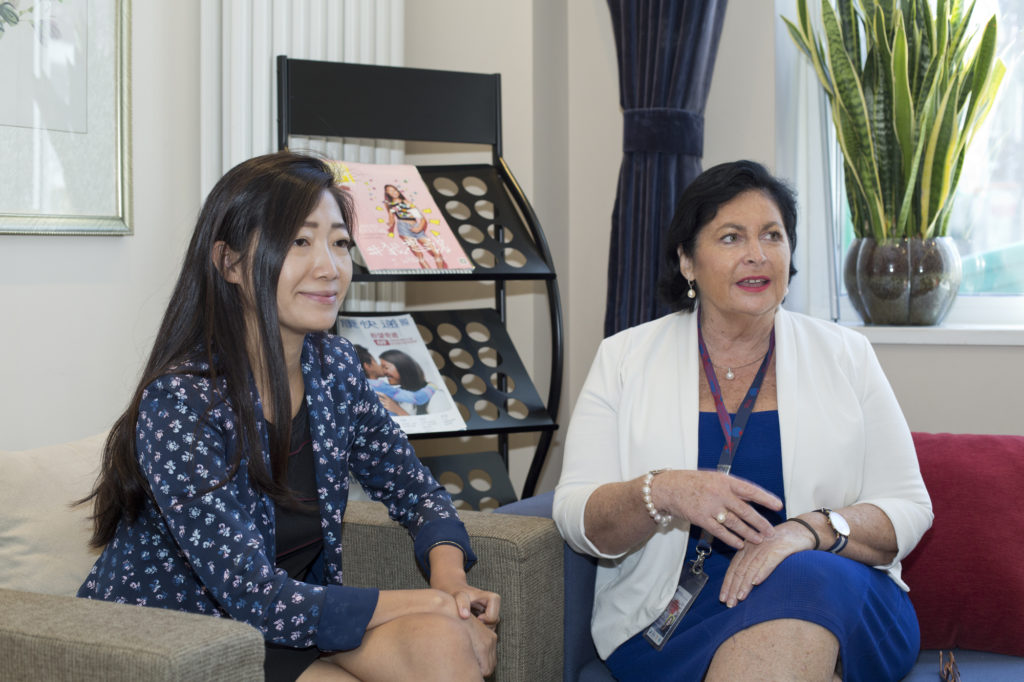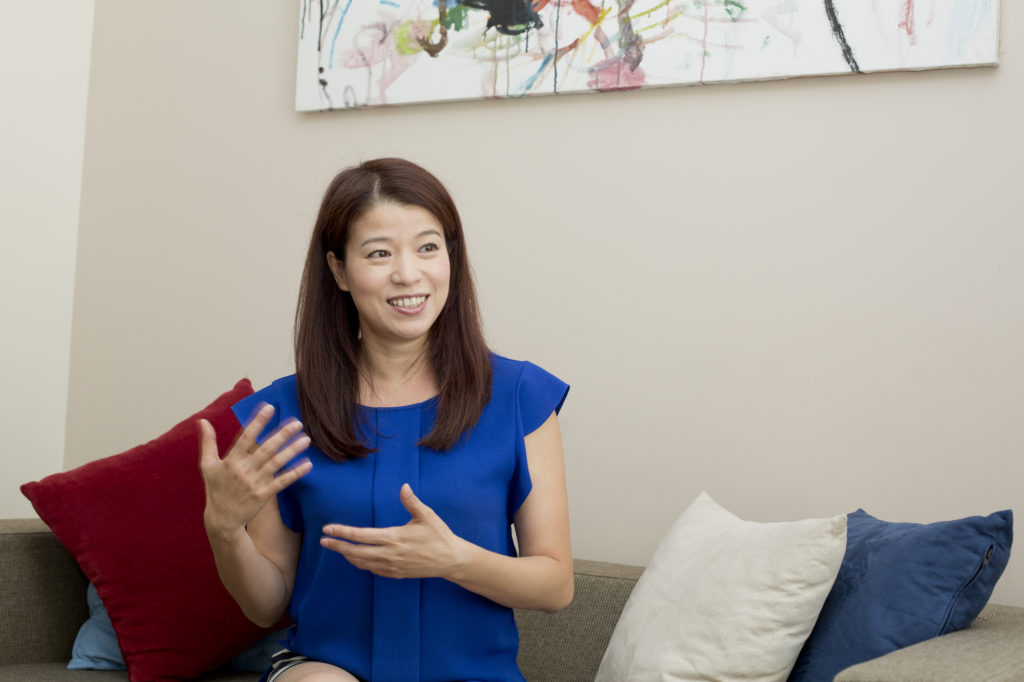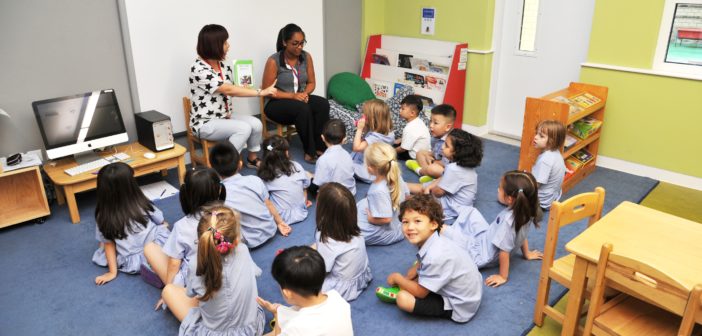Jenny Chang doesn’t think bilingualism is just a buzzword, but a way of life. That’s why the Chinese American mother of two was excited to have her boys study at Yew Chung International School of Beijing (YCIS Beijing), where Western and Chinese teachers work side by side in every sense of the word to ensure that students are deeply immersed in a bilingual environment.
Chang, like all parents who enrolled their children at YCIS, is a big proponent of the school’s co-teaching model, where educating is shared between a Western and Chinese teacher in the vast majority of classes, allowing both languages to become a major part of the students’ daily routine.
“I visited a lot of international schools in Beijing before I came here. For many of them, English was the major language, and Chinese was only offered a few times a week,” she says, adding that she got a much different impression once she visited YCIS Beijing: “Once I came here and saw the co-teaching model, where almost all the time there is a Chinese speaking teacher and an English speaking teacher in the class, I saw that this was a great way for the kids to learn both languages.”
Below Chang, along with YCIS Beijing’s co-teaching experts, tell us more about the value of this fully bilingual strategy (you can meet these educators, and the entire staff, at YCIS Beijing’s upcoming Open Day on October 19).

Mills chats with students during recess.
Jennifer Mills, Primary Curriculum Coordinator
I think co-teaching brings the understanding of both cultures together in the same place. Obviously you’ve got the bilingual aspect, but also it’s about learning to understand the culture they exist in so they can be successful people that live in this foreign society.
Aside from their English class, which is entirely in English, and their Chinese class, which is entirely in Chinese, their other subjects— Maths, Sciences, History— are all taught bilingually with both teachers in the room.
For this co-teaching model, the concept is presented in English and key words are reviewed in Mandarin. Everything is bilingually written and taught; you’ll walk around and see signs in Mandarin and English. So it’s not just something we say we do, but something that we work very hard at to make successful.
For instance, the students might be learning about rocks and minerals in Science class. For the students whose language skills aren’t strong enough, we’ll preload them with vocabulary that’s needed before the unit begins. That way they have the support teaching they need to have success in the unit they’re studying.
They’re surrounded by the language, it surrounds everything they’re doing. Even our school song is in both languages.

Peng (left) discusses the benefits of co-teaching.
April Peng, Primary Chinese Coordinator
The bilingualism is obviously a big benefit, but equally important is the comparative learning aspect of co-teaching. For example, if students are learning about Marco Polo in their history class, the Chinese co-teacher will also work with the Western teacher to tie that lesson into another lesson about a famous Chinese explorer like Xu Xiake. Or if they’re learning about grizzly bears from their Western teacher, the Chinese teacher will spend part of the lesson on pandas. That way, students are learning about both languages and both cultures.
With this co-teaching method, the students are not only speaking Chinese in Chinese class, they’re also using the language all day, so there are so many more opportunities to use it and learn.
It’s also very beneficial for the teachers to have a partner from another culture that they can work close with and be equals with. They help each other so much and form such a strong bond, it’s almost like a marriage (laughs).

Chang says YCIS’ co-teaching model has been indispensable for her two young sons.
Jenny Chang, parent and PO Co-president
My sons were born in the States, but we are Chinese American so I want my boys to write and read Chinese fluently. I know that the environment is very important for a language— I’ve studied Japanese and Spanish, but if you don’t speak it you forget! So I wanted an environment like YCIS Beijing that would encourage them to speak bilingually as much as possible.
The students are being taught Chinese every day at YCIS Beijing. I like that in their Math and History classes there is bilingual co-teaching, and I like how that doesn’t just mean translating, but that the teachers have creative and innovative ways of using the language together.
Thanks to this very strong bilingual environment at school, I am also encouraged to speak bilingually with my sons at home. It’s the same for many of the families here— I had a Spanish friend bring her children to YCIS, and when she arrived the kids didn’t speak English or Chinese. But later in the school year the kids started translating for their parents in both English and Chinese, which is really great to see.
This post is sponsored by YCIS. Learn more about YCIS Beijing’s upcoming Open Day on October 19
Photos: Uni




